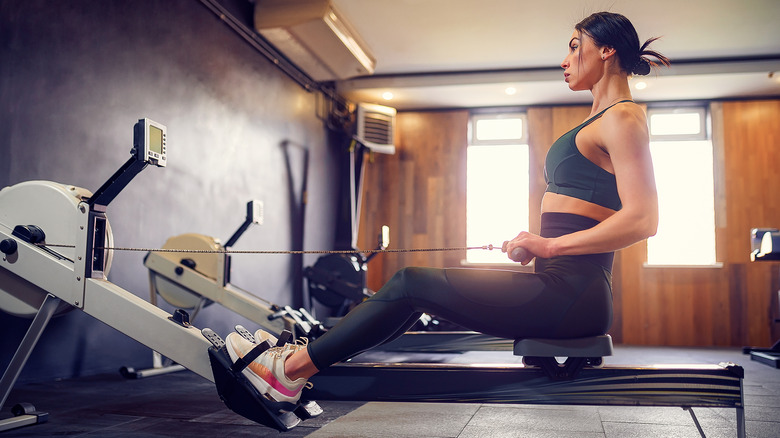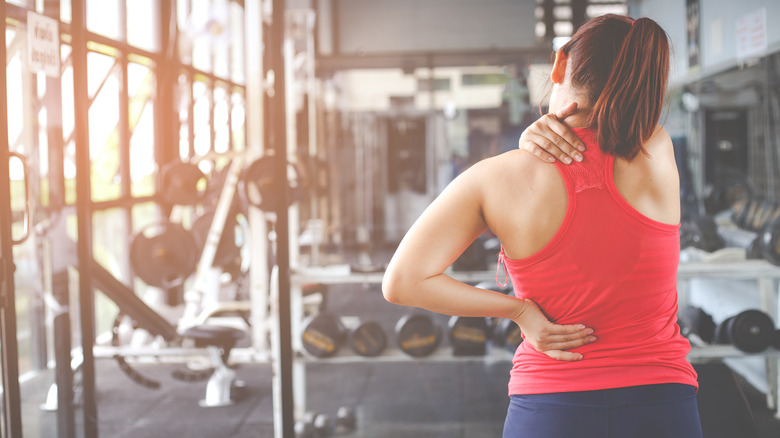Why You Should Never Round Your Back When Using A Rowing Machine
The rowing machine offers a full-body workout and raises your heart rate, which makes it ideal for both cardiovascular workouts and strength training. This piece of gym equipment engages 86% of your muscles during each stroke, instructor Sarah Fuhrmann told Live Science. It works your quads, glutes, hamstrings, arms, back, and core muscles, as well as smaller muscle groups, including the traps and calves. On top of that, rowing is easier on the joints than running, sprinting, and other heart-pumping workouts. "Because it's a resistance exercise done in a seated position, you're not putting as much wear and tear on your back and knees," notes exercise physiologist Chris Dempers (via the Cleveland Clinic).
Rowing is also a great workout for building strength in the upper back, leading to better posture. "That's a big thing, as we see so many people staring down at computers or phones all day," says Dempers. Your back muscles come into play when you pull the handles toward your chest.
If you want to take up rowing, or are already hooked on this exercise, be sure to pay attention to your form. Too many gym-goers who use the rowing machine make the mistake of rounding their back doing this motion, which can result in painful injuries.
Using proper form prevents pain and injury
Rowing with correct form is critical in order to not put stress on your back and cause injury. Certified personal trainer Delia McNelly told Yahoo Life that the most common mistakes she sees are rowers rounding or hunching their shoulders or over-extending their back. "These improper forms can lead to back pain due to unwanted stress on the back extension muscles," she noted. "Rounding the shoulders can cause upper-back soreness and neck pain."
But it's low back pain that's most common among rowers and is the subject of many research studies (per Power House Physio). It turns out that rowers experience low back pain or injury because of the repetitive stresses rowing places on the lumbar spine and pelvis or lower back, which is exacerbated by not using good form.
"Fatigue of the major muscle groups involved due to overuse is what causes the individual to place stress on the muscles of the lower back and not use proper form," McNally says via Yahoo Life. Also, tight hips, ankles, and knees can cause you to round your lower back, according to Power House Physio. Weak core muscles are another contributor to poor form. Rowing engages the abdominals through each phase of the stroke (per Rowing Machine King), so if you lack core strength, you may find it hard to keep your back straight through every stroke.
Core strength training, stretching, and proper recovery time between rowing sets can help you maintain proper form and prevent injury (per Power House Physio).


